Patent MarketPlace: Other Types of Patents for Sale
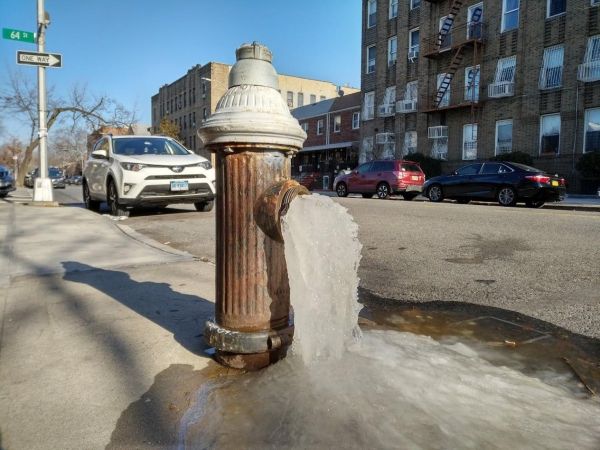 Freeze-Proof Fire Hydrant (Neilsen): U.S. Patent No 11,746,510
Freeze-Proof Fire Hydrant (Neilsen): U.S. Patent No 11,746,510
The fire trucks and firefighters arrive, but they cannot fight the fire because the fire hydrant is not working! We saw the results of this during the recent Los Angeles fires that burned thousands of homes to the ground. In Los Angeles, it was a lack of water that hindered the firefighters, but the results are the same when a hydrant has been disabled because water froze inside it. In the northern half of the U.S., water freezing inside a fire hydrant is a common problem that can lead to loss of property – even loss of life!
This patent addresses that issue with a next-generation fire hydrant design. It includes a gate valve that turns the hydrant on and off, plus a drain valve that opens the bottom of the upper barrel of the hydrant so the water can run out, leaving the upper chamber empty. When the firefighters arrive for the next fire, the upper barrel is empty, and all they have to do is open the gate valve to activate the hydrant – and fight the fire.
U.S. Patent No. 11,746,510 for a “Fire hydrant system” will enable any manufacturer of fire hydrants to offer a next-generation product that is impervious to the damage that can be done to conventional hydrants by freezing weather. The technology can also be used to retrofit hydrants currently in use.
 Notification of Gun Removal from Holster or Firing (Howard): U.S. Patent No. 11,378,355
Notification of Gun Removal from Holster or Firing (Howard): U.S. Patent No. 11,378,355
When a gun has been removed from its holster, that could be a good or a bad thing. But it is definitely something the gun owner – and others – need to know about. If that gun is fired, that could also be a good or a bad thing – and something the gun owner and others should know about. If a gun owner takes his or her gun to the firing range, withdraws it from the holster, and fires at a target, that is not an event that indicates any danger. But if a gun is removed unexpectedly from its holster, that is an event people need to know about – especially if the gun is then fired!
This patent creates a monitoring device for handguns. Should the handgun be removed from its holster, a pre-defined group is automatically notified. For example, if it is a police weapon, the local dispatcher would be notified. A police officer may be forced to draw his or her weapon before he or she has had a chance to call in the incident. The dispatcher would be notified so back-up can be sent immediately. If the device notifies dispatch that the gun has been fired, additional support can be dispatched without radio communication. If it is a privately owned gun that has been fired, the device can report that a deadly incident may have occurred via a PSAP (Public Safety Answering Point) or a service such as OnStar.
A device based on this patent would in no way limit gun ownership or use. It simply reports to those who need to know that the gun has been removed from its holster and if the gun has been fired. U.S. Patent No. 11,378,355 for a “System for providing a third-party notification of weapon danger” would enable any manufacturer of gun safety products to provide an added level of gun safety for its customer base.
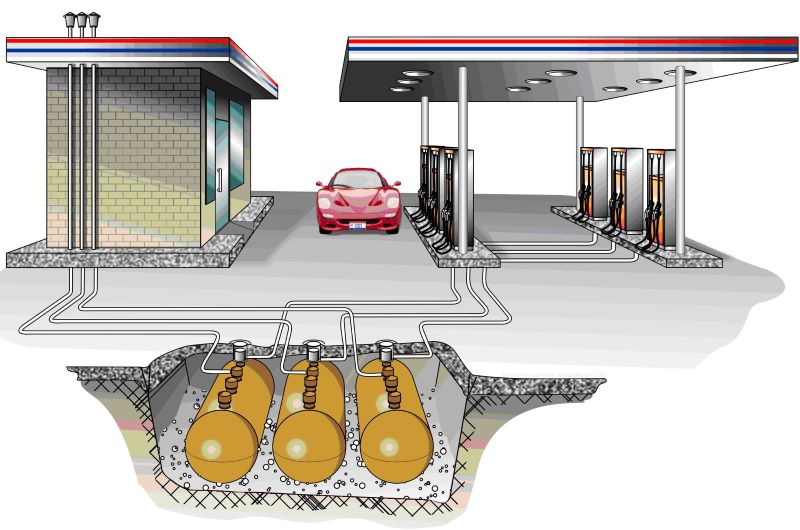 Removal of Water from Fuel Tanks (Rossi): U.S. Patent No. 10,646,796
Removal of Water from Fuel Tanks (Rossi): U.S. Patent No. 10,646,796
Oil and water do not mix. And when water collects in a gasoline, fuel oil, or diesel fuel tank, we have real trouble. For starters, there is no way to prevent water from collecting in fuel tanks. The part of the tank that is not fuel is air, there is water vapor in the air, and when the temperature cools down, that water vapor condenses and the result is water in the fuel tank. If – when fuel is pumped out of the tank – water is mixed with that fuel, the recipient of the fuel-and-water mix will have real problems. Not only will the car or truck with water in its fuel stall, the fuel-and-water mixture can cause expensive damage to the engine. Additionally, water in fuel tanks creates a condition known as “Phase Separation” that produces an extremely corrosive acid that damages very costly internal fuel dispensing components.
This patent addresses this ongoing problem very cost effectively with savings in labor and material of up to 90% over current technology. It creates a device that is dropped into a fuel tank and it absorbs the water in minutes – but not the fuel. The device (referred to as a “Water Hog” in the patent) has a super-absorbent polymer insert that soaks up and holds the water. The device is lifted up out of the tank and its insert is removed. The water-filled insert is dehydrated to remove water from it so it can be safely and legally disposed. A new insert is then inserted into the Water Hog, and it is ready to use again. One embodiment of the invention can be used to clean up oil spills by absorbing the sheen (the oil-contaminated water) from the surface of a lake, river, or the ocean. The Water Hog has applications for every home or business that has a fuel tank: Gas stations, truck stops, marinas, airports, bus and truck fleets, and government and military installations as well as homes, businesses, and other facilities.
U.S. Patent No. 10,646,796 for “Devices and methods for quickly removing unwanted water from tanks” will enable any supplier to the fuel industry to provide a practical and affordable solution to removing water from residential and commercial fuel tanks.
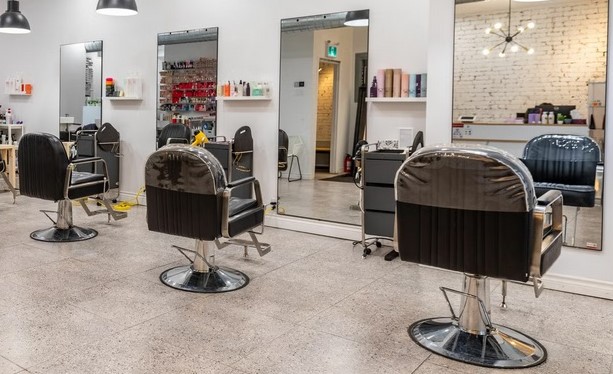 Hair Salon and Barber Shop on Wheels (Williams): Patent No. 11,748,769
Hair Salon and Barber Shop on Wheels (Williams): Patent No. 11,748,769
We all love food trucks. They bring hot food to us so we do not have to drive to a restaurant, find a place to park, and make our way to the restaurant. And, for reasons that cannot be explained, food truck food is great! Food trucks are perfect for sporting events, flea markets, carnivals, fairs, car shows, and any outdoor event where there are lots of people. They bring food to factory, warehouse, and office workers, saving them time and travel.The concept is simple: Bring directly to customers the food they want to eat. Why could this concept not be applied to other products and services?
It has! This patent creates the first mobile hair salon and barber shop. It can be in a trailer or van, and it is fully equipped to shampoo, condition, dry, cut, and style hair. The invention follows exactly what is done to convert a truck or trailer into a food truck, but instead of a refrigerator and grill, it includes seating, sinks, and everything that is needed to provide hair care. A hair-salon-and-barber-shop-on-wheels would be an ideal means of serving customers in remote areas for whom a drive to a conventional hair salon or barber shop would be a hardship. A hair-salon-and-barber-shop-on-wheels based on this invention could serve college campuses where many students do not have cars, or nursing or retirement homes where the residents have limited mobility. A portable hair salon and barber shop could be a stand-alone business, or an extension of a current hair grooming business that would enable the enterprise to reach customers who cannot just jump in a car and drive to their fixed location.
U.S. Patent No. 11,748,769 for a “Method of providing grooming services and/or a mobile grooming store and system” would enable any manufacturer of food trucks or other specialized trailers and trucks to add a new conversion that will be patent-protected through 2042.
 Outdoor Heating Device for Restaurants (Innerflame): International Patent Portfolio
Outdoor Heating Device for Restaurants (Innerflame): International Patent Portfolio
There does appear to be one benefit from the recent pandemic. Many restaurants were forced to switch to outdoor dining or to expand their outdoor dining facilities, and that trend has remained, with outdoor dining now more popular than ever. The challenge, of course, is what to do in the winter months. From spring through the summer and into fall, outdoor dining is very attractive. But even in warmer southern states, it can get just a little too cool for customers to eat outdoors November through February.
This portfolio addresses that issue by creating an outdoor heater that is under a tabletop. Some restaurants have tried an open fire pit to warm their outdoor eating areas, but it is smoky, it has to be re-supplied with fuel, and it does not provide heat where the restaurant patrons really need it. This portfolio creates a gas-fueled heating device to which the fuel is piped so there are no cartridges to refill or replace. It provides heat where the customers are seated, and the heat can be controlled based on weather conditions. While it produces a steady flow of heat, the side and tabletop are not hot to the touch, so hot and cold food can be served on the tabletop. And the design is totally scalable for different size and shape configurations. A test run of 35 units at 14 locations in Australia was very successful!
Patent Portfolio
- U.S. Patent No. 11,759,007: Heating device
- European Patent 3810991: Heating device
- China Patent 112292565: Heating device
- Japan Patent 2021528621: Heating device
- Australia Patent Application 2019289288: Heating device
- Canada Patent Application 3103998: Heating device
- India Patent Application 202017057277: Heating device
- New Zealand Patent Application 770679: Heating device
This international patent portfolio – or individual patents from the portfolio – can be used by any supplier of restaurant equipment to introduce to the hospitality industry a safe, affordable, economical, practical, and flexible solution to outdoor dining in cooler weather.
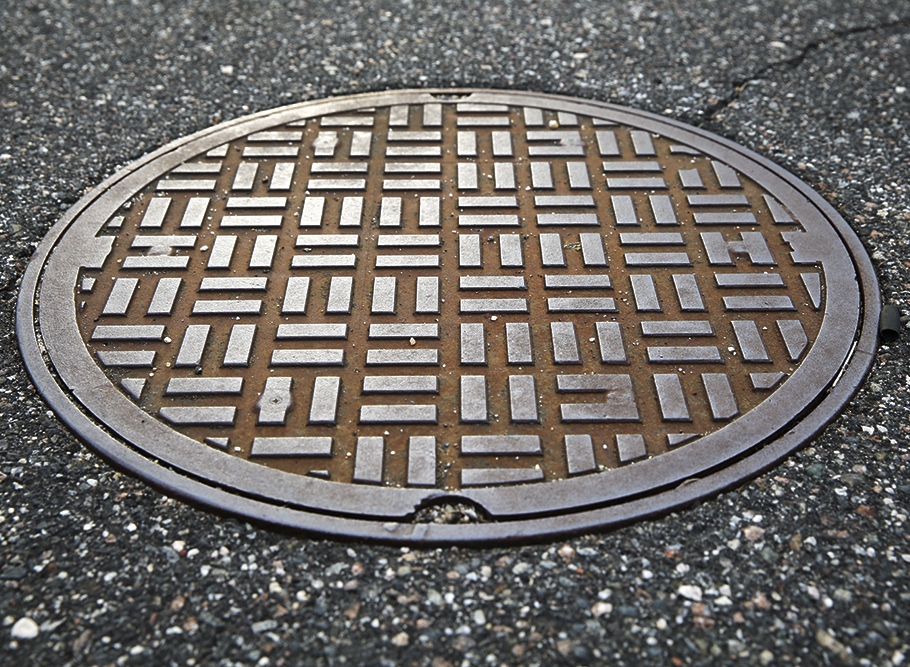 Safer, Easier Access to Manholes (DC Water): U.S. Patent No. 9,738,502
Safer, Easier Access to Manholes (DC Water): U.S. Patent No. 9,738,502
Every city has a complex underground infrastructure that is largely invisible to the public. Beneath each city’s streets there is a sophisticated network of water, sewer, gas, electrical, telephone, and cable lines that make the city work. All of these services are accessed through manhole covers that must be removed to access this vast underground infrastructure. Manhole covers must be strong enough to support not just the cars, but the trucks and busses that roll over them. As a result, most manhole covers are made from cast iron and they can weight over 250 pounds each. Lifting one up to access the underground infrastructure is both difficult and dangerous!
This patent addresses that specific issue. It covers a brilliantly simple tool that hooks under a manhole cover and enables the utility worker to quickly and easily lift it up and slide it away. The tool includes an additional handle that can be directionally adjusted to shift the center of gravity to reduce back strain for the user and to aid the utility worker in gripping the tool, making the worker’s job easier, more efficient, and safer.
U.S. Patent No. 9,738,502 for an “Ergonomic manhole cover lifting tool, system, method, and apparatus” would enable any manufacturer of industrial tools to create and own a new market segment.
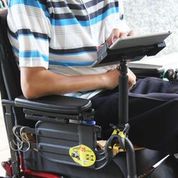 Mobile Device Mounting and Positioning Tool (Chang): International Patent Portfolio
Mobile Device Mounting and Positioning Tool (Chang): International Patent Portfolio
How many times have you wished you had a third hand? Especially when you are using your smartphone or other electronic device? Every smartphone user has found himself or herself propping the phone up to free his or her hands. And then it slips and crashes to the floor. Not good. We all need our smart phone, camera, or other electronic device to be hands-free from time to time.
This international portfolio covers five separate inventions for a product to hold a smartphone, camera, or other mobile device so the user can free up his or her hands. The first is a shaft that grips to hold the device. The second has clamps that grip a desktop, countertop, tabletop, or other edge. The fourth has a telescoping pole that can be adjusted to any length. The fourth consists of two clamps, one to securely hold the mobile device. The fifth uses a holding wall connected to a mounting unit with a threaded shaft. This portfolio includes U.S., European, and Asian patents for truly global coverage.
Patent Portfolio
- U.S. Patent No. 9,115,740: Fixer for handheld, portable, mobile device
- European Patent 2725279: Fixer for handheld, portable, mobile device
- Japanese Patent 3180900: Handheld mobile terminal fixing device
- Taiwan Patent Application M458067: Handheld mobile device holder
- Chinese Patent 202884428: Fixator capable of being held by hand and carrying with mobile device
- U.S. Patent No. 9,273,821: Positioning device working with fixer for handheld, portable, mobile device
- Japanese Patent 3180904: Positioning device for handheld mobile terminal fixing device
- Korean Patent 200474961: Positioning device working with fixer for handheld, portable mobile device
- Taiwan Patent Application M453221: Positioning device of handheld portable mobile device
- Chinese Patent 202884430: Fixator positioning device capable of being held by hand and carrying with mobile device
- U.S. Patent No. 9,206,943: Extension rod device working with fixer for handheld, portable, mobile devices
- Japanese Patent 3180902: Stretching rod for handheld mobile terminal fixing device
- Korean Patent 200474960: Protective sheath working with a fixer for handheld, portable mobile devices
- U.S. Patent No. 9,625,086: Fixing device
- European Patent 3091269: Fixing device
- Japanese Patent 6092290: Holding device
- Korean Patent 101651360: Fixing device
- Taiwan Patent I555945: Fixing device
- Chinese Patent 106032869: Holding unit
- European Patent 2868934: Connecting hole having a teeth-like configuration
- Korean Patent 101759384: Connecting hole having a teeth-like configuration
- Taiwan Patent I560390: Releasable fastening devices locking by rotation
- Taiwan Patent I544775: Connector module
- Chinese Patent 104659525: Connector module
- U.S. Patent No. 10,500,699: Hands-free dual clamp device
- European Patent 3306171: Hands-free dual clamp device
- Taiwan Patent I615247: Double end clamping device
Individual patents from the portfolio may be acquired to create a single product, or multiple patents can be acquired to create a mobile device brackets product line. These patents would be a strategic acquisition for any company supplying smart phone, tablet, camera, and other electronic aftermarket products.
 Immediate Local Weather Forecast: European Patent 3185049
Immediate Local Weather Forecast: European Patent 3185049
In “The Legend of Bagger Vance,” the lead character, played brilliantly by Will Smith, looks up at a clear blue sky with just a wisp of stratus clouds and accurately predicts that it will rain the next day. Yes, there is a weather bureau that uses satellite images and computer modeling to predict the weather, but those forecasts are not always accurate, and the weather can be dramatically different from one locale to another. It can be raining in the mountains, but sunny near the ocean – or vice versa. There are many applications for an immediate, short-term weather forecast for a specific location – farming and forestry operations, municipal snow clearing and highway maintenance, fire prevention and public safety, solar panel farms, and outdoor sports and entertainment venues.
This is exactly what this patent does. This invention covered by this patent uses thermal imaging and temperature readings, compares those thermal images and temperatures against previous images and temperatures and the weather that followed those images and temperatures, to produce an immediate, short-term, local weather forecast. European Patent 3185049 for “A method and system for weather forecasting” would be an ideal acquisition for a company prepared to create a totally new business product for weather-sensitive businesses and venues with patent protection in Germany, the UK, and France through 2035.
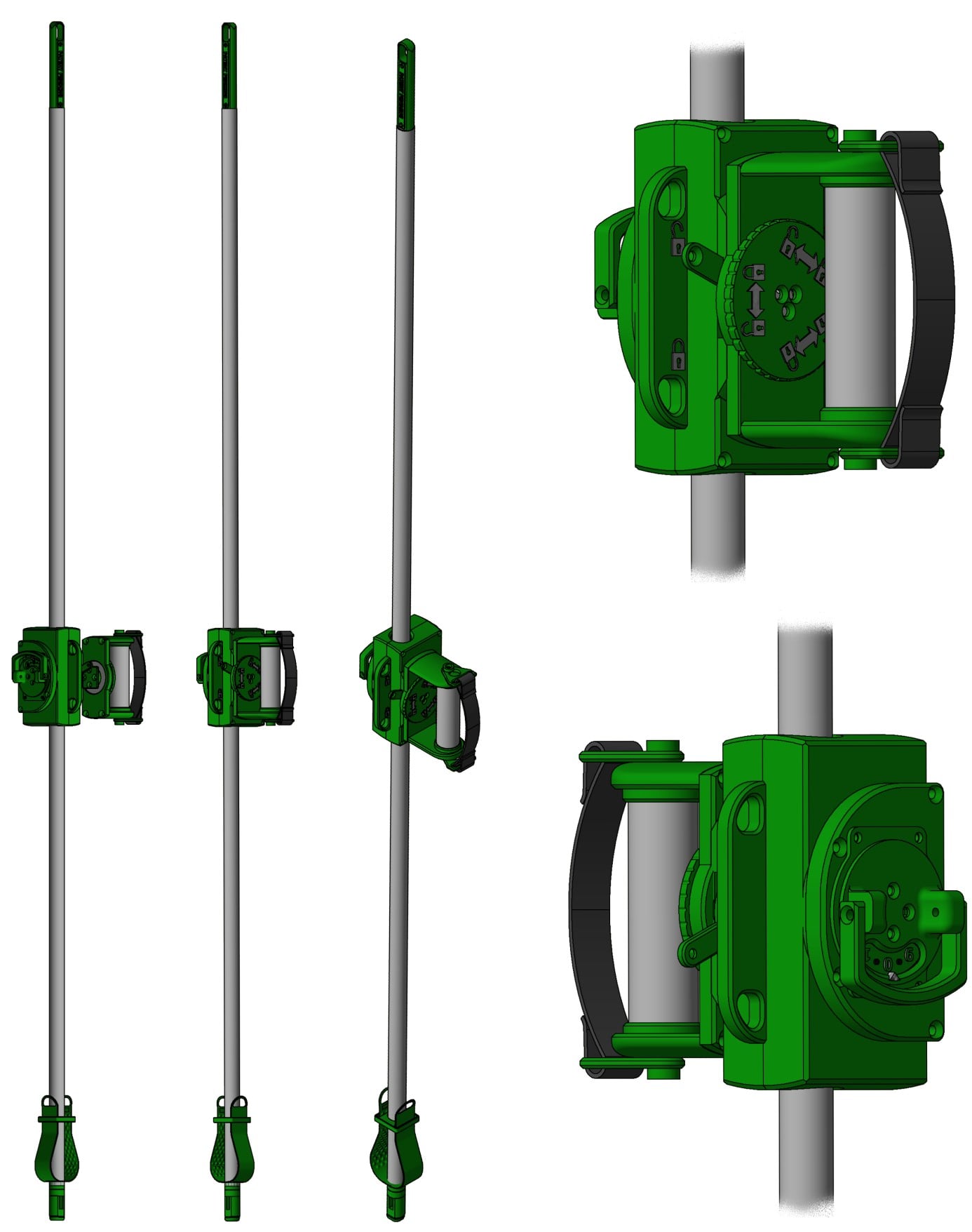 “Big Stick” Exercise Tool (Pinkart): U.S. Patent No. 10,632,338
“Big Stick” Exercise Tool (Pinkart): U.S. Patent No. 10,632,338
The problem with most of the exercise equipment on the market today is that it is large, heavy, and cumbersome – and is composed of weights, bands, or springs. They are also expensive, and they cannot be taken with you when you travel. Those seeking muscle-strengthening exercise want a device that is low-impact, compact, lightweight, portable, and affordable.
The exercise tool created by this patent provides adjustable and gradable resistive force to challenge and strengthen muscles – similar to the strengthening encountered with lifting progressively heavier weights or by using weighted gym equipment. The exercise tool covered by this patent includes:
- Main pole that can be divided into sections for easy transport and storage
- Tensioning assembly that moves up and down the main pole, providing resistance in both directions
- Handles that attach to the tensioning assembly that the user can move up or down the pole for varying exercises
- Base that includes a protective, rounded tip that allows the main pole to rotate freely
- Foot straps that secure the main pole while the tensioning assembly is moved up and down
- Door-mount assembly at the base portion that enables the exercise tool to be pinched between a door and a door jamb for horizontal resistance
The device can be used to strengthen both arms and legs, and it has applications for those receiving physical therapy as well as anyone seeking to improve his or her health and physique. It is light enough that it can be taken to work in a carrying case and used in the office for a midday workout, or taken on business trips or on vacation. A physical therapist could take it with him or her when making patient calls.
The inventors of U.S. Patent No. 10,632,338 came up with the potential brand name of “Big Stick,” a term that is available to be trademarked by the acquirer of this patent. This patent would be a strategic acquisition for any exercise equipment manufacturer looking to introduce an affordable, portable exercise product.
 Collapsible Snowshoe (Kreutzer): International Patent Portfolio
Collapsible Snowshoe (Kreutzer): International Patent Portfolio
Snowshoes enable you to walk on snow over many kinds of terrain without sinking into the snow by spreading your body weight over a larger surface than just your foot. Snowshoes were developed thousands of years ago and were in common use by Native Americans when European settlers arrived 500 years ago. For the last 15 years, snowshoeing has been the fastest-growing winter sport around the world. Snowshoes are used for recreation, safety, winter hunting, winter camping, rescues, fuel delivery, snowmobiling (breakdowns), and more. While the technology is fairly simple and snowshoes are relatively inexpensive, conventional snowshoes are large and clumsy. It is difficult to transport them along with your other gear for outings or vacations, and it is especially cumbersome when it is a family or group outing of any kind.!
Until now, that is. This portfolio covers technology for snowshoes that are lightweight (about four pounds for one pair), affordable, easy-to-use, and effective in many types of terrain. They quickly collapse, making them easy to take on trips and easy to store in a car trunk or closet, or even in the corner of your office. The invention covered by this portfolio includes a frame with a supporting crossbar that interacts with a second supporting crossbar that alternates between an open and closed position. Supporting material extends between the crossbars to create a support surface for walking on snow. Just unfold the snowshoes when you need them and collapse them by releasing the simple locking mechanism when you are done.
Patent Portfolio
- U.S. Patent No. 8,006,412: Collapsible snowshoe
- U.S. Patent No. 8,601,723: Collapsible snowshoe
- U.S. Patent No. 9,114,308: Snowshoe
- European Patent 2088884: Collapsible snowshoe
- Canadian Patent I514311: Collapsible snowshoe
- Canadian Patent 107800905: Snowshoe
Included with the portfolio is the Registered Trademark “SnowXu” along with working prototype inventory, so the acquirer of this portfolio can go to market almost immediately! Collapsible snow shoes can become are just as important as functional ski wear to the outdoors winter enthusiast.
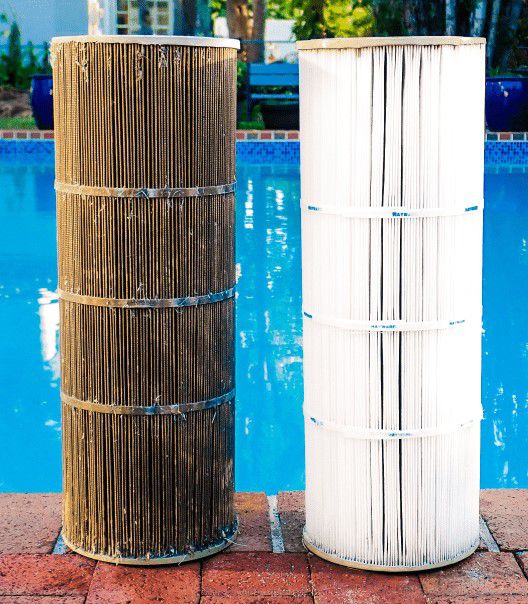 Next-Generation Swimming Pool Filter (Berg): U.S. Patent No. 10,307,698
Next-Generation Swimming Pool Filter (Berg): U.S. Patent No. 10,307,698
The problem with all filters – from vacuum cleaner to swimming pool filters – is that they fill up with solids (if they are doing a good job) and so they become progressively less efficient starting the moment they are installed. The filter fills with solids – that’s good because that is what the filter is supposed to do – but those solids collected by the filter slow down the flow of air or water through the filter media, slowly but steadily decreasing the effectiveness of the filter over the life of the filter media. For swimming pools, this diminishing effectiveness of the filter means that less water is flowing through the filter, so more chemicals have to be used to keep the water clean by killing algae and other contaminants.
The specific problem with the current generation of swimming pool filter cartridges is that they’ve used exactly the same design for roughly the last century. This patent creates swimming pool filter media that starts out coarse, gradually picking up smaller and smaller particles. It captures more solids while also permitting increased water flow for more effective cleaning of the swimming pool water. The patent replaces pleated surface-type media with depth-type media that holds more solids so the filter does not have to be backwashed, cleaned or replaced nearly as often as conventional filters – and that saves water. This depth-type media produces very little drop in pressure, providing a higher pool water circulation rate for crystal clear water!
The filter cartridge features upper and lower support plates that are releasably interconnected to one another by an elongated connector. Several filter cartridges are located between the upper and lower support plates, and each filter cartridge includes a cylindrical, elongated filter media that is inter-engaged at one end by a positioning element attached to an upper support plate.
U.S. Patent No. 10,307,698 for a “Multiple cartridge fluid filter canister” creates the first major innovation in swimming pool filter cartridges since swimming pools became popular in backyards. It creates a swimming pool filter that lasts longer and filters more solids out of the water so fewer chemicals and shock treatments are required! Any manufacturer of swimming pool filters can use this patent to introduce a second line of swimming pool filter cartridges that outperforms all other products offered by any competitor for the two million owners of swimming pools that use filter cartridges!
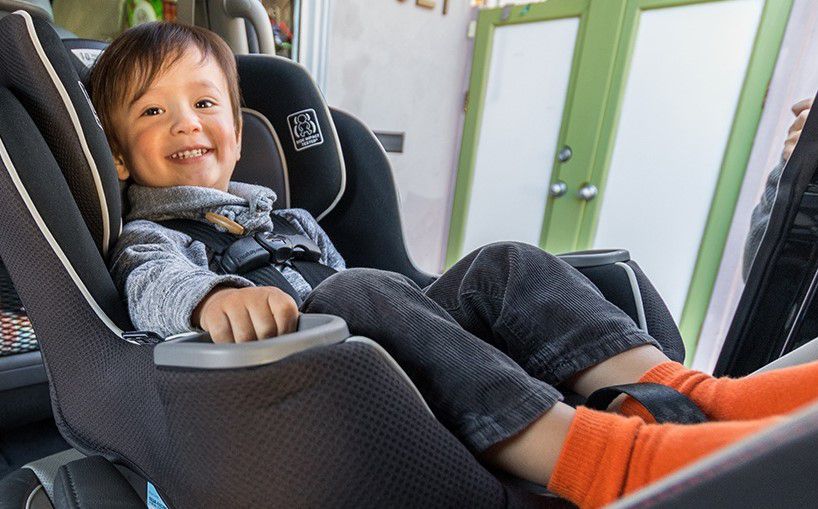 Car Seat Smart Buckle (Hicks): U.S. Patent No. 10,232,821
Car Seat Smart Buckle (Hicks): U.S. Patent No. 10,232,821
According to the National Highway Traffic Safety Council, 52 infants died from heat stroke in 2019 when they were accidentally left in a car seat. These were 52 totally preventable deaths that were devastating to the families who lost a child in such an unfortunate and preventable way! Since car seats were introduced in 1971, they have saved tens of thousands of lives in accidents, but over 1,000 children were left in a car seat to die. Such a tragedy.
This patent creates a simple, affordable, and easy-to-use solution to those child deaths. A “smart buckle” is attached to the car seat when it is installed in the vehicle. The smart buckle has a pressure-sensitive pad, so it can determine when a child is placed in the car seat. The smart buckle comes with a receiver fob that the driver attaches to his or her key ring. When a driver leaves a vehicle, but has left his or her child in the car seat, the smart buckle transmits a message to the fob on the driver’s key ring. The distress signal on the driver’s key ring continues to sound until the infant is removed from the car seat. Another life saved!
U.S. Patent No. 10,232,821 for a “Smart buckle” can be used to create an aftermarket product that is purchased by parents and is attached to the car seat, or it can be used to create a device that is incorporated into the design of an existing car seat to create a line of safer car seats. In both applications, there is no programming or configuration, so installation is quick and simple.
 Bicycle Tire Monitor (StatCap): U.S. Patent Nos. 10,179,621 and 10,532,785
Bicycle Tire Monitor (StatCap): U.S. Patent Nos. 10,179,621 and 10,532,785
All of today’s automobiles come with a tire pressure monitor that lights up an icon on the car’s dashboard when a tire has low pressure. This is considerably more convenient than going from tire to tire with a tire pressure gauge. Proper tire pressure makes for safer driving, better performance and longer tire life. It’s a win/win for the car owner. Wouldn’t it be great if the same technology existed for bicycle riders? Especially bike riders for whom their bicycles are serious equipment in which they made a considerable investment?
This two-patent portfolio addresses exactly that need and more. In addition to monitoring tire pressure and reporting it to the rider’s smartphone, it also measures tire temperature and tire acceleration and reports the data to the user. And…if the bicycle is moved (maybe by a thief), it reports that to the rider as well! The portfolio can be used to create either a screw-on cap for the valve stem on existing bicycles or a monitoring device that is incorporated into the bicycle design.
This portfolio also includes software developed by the patentee that pertains to normalizing road behaviors such as grade steepness, road cadence (for example, log and report poor road conditions autonomously), road gradients (pavement, gravel, dirt, etc.), predictive analysis of tire degradation, and wheel cadence such as tire torque and tire acceleration to measure average wattage (also known as “power meter”) for greater rider efficiency. The hardware PCB design files, Gerber files and all available BOMs can be used to develop an end-to-end solution for users.
U.S. Patent Nos. 10,179,621 and 10,532,785 for a “Wheel telemetry monitoring system” would be a critical acquisition for any bicycle or bicycle accessories manufacturer seeking to leapfrog the technology and product offerings of all of its competitors.
 Preservative-Free Cosmetic Products (Kronenthal): U.S. Patent No. 10,058,159 and PCT Patent Application
Preservative-Free Cosmetic Products (Kronenthal): U.S. Patent No. 10,058,159 and PCT Patent Application
In order for cosmetics – which are not regulated by the FDA – to remain fresh, at least one toxic preservative must be added to prevent bacterial, fungal and yeast growth within and on the surface of the cosmetic. But the value of the preservative’s product-freshness-retaining abilities has to be weighed against the negative effects of the actual preservative on the consumer of the product. Of special concern are cosmetics because women apply them – foundation, blush, wrinkle remover, skin moisturizer, eyeshadow, mascara and other items – directly to their skin. For the rest of the day, these toxic preservatives are being slowly absorbed into the woman's body, adversely affecting hormonal balances and creating other potentially serious medical problems.
But isn’t there a way for women to apply cosmetics that are completely safe and free of any chemicals other than the cosmetic itself? That is the challenge this portfolio solves. This U.S. Patent creates cosmetics that come in a sealed, single-use package that is impermeable to microorganisms and other air-borne contaminants, contains no toxic antimicrobial preservatives or their molecular fragments, and is 100% sterile. This comprehensive patent covers creation of preservative-free cosmetic formulations, packaging of the cosmetic formulations in a microbially impenetrable disposable container, and sterilization of the contents in single-use packets using heat or radiation. A similar methodology is employed to prepare sterile products for use during surgical procedures in the operating room.
U.S. Patent No. 10,058,159 for “Sterile compositions for human cosmetic products” comes with PCT Patent Application 2018102102 so the acquirer of the portfolio can apply for matching patent protection in any of the over 100 countries that are signatories to the Patent Cooperation Treaty. The company that acquires this portfolio will be able to offer the first and only preservative-free, 100% sterile line of cosmetics in multiple nations around the world!
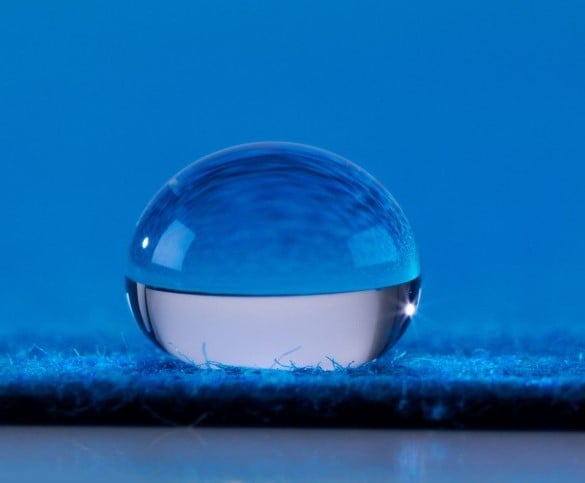 Next-Generation Multiple Droplet Applicator (McCarthy): U.S. Patent No. 8,640,717
Next-Generation Multiple Droplet Applicator (McCarthy): U.S. Patent No. 8,640,717
Every chef knows that the key to a successful dish is not simply using the right ingredients, but mixing together those ingredients in exactly the right proportions in exactly the right order. That concept also applies to industrial processes in which one or more liquids have to be applied to a surface. How they are applied – in what exact quantities and in what sequence – can be critical to the success of the process. Just any droplet applicator will not do if a successful outcome is important.
There are numerous processes in which the precise application of multiple liquids is critical. When removing material from a surface, the correct application of two different cleaners is often necessary. When cleaning delicate surfaces – such as fossils and art objects or semiconductor devices – applying just the right amount of each liquid is very important. When adding a substance to a process during manufacturing – such as adding precipitates, polymers and agglomerates – accuracy is essential to the proper outcome of the process. When a surface is used to catalyze a reaction involving substances – but without the formation of side products – the application process must be precise. This patent creates a multi-stream droplet applicator in which the droplets have no contact with each other before hitting the surface, the droplets can be applied through a continuous or interrupted flow, application can be via sonic or ultrasonic radiation or various frequencies of electromagnetic radiation, and the temperature of the liquids and gasses can be carefully controlled.
U.S. Patent No. 8,640,717 for a “Multipurpose sequential droplet applicator” would enable a container or applicator manufacturer to leapfrog all of its competitors and introduce a next-generation product. The patent has industrial, pharmaceutical and semiconductor applications.
 Improved Water Line Connector (Kim): International Patent Portfolio
Improved Water Line Connector (Kim): International Patent Portfolio
When firefighters arrive on the scene of a fire, every second is critical. Just a few wasted seconds can mean the loss of life and property. The connectors currently in use by most fire departments have been around for a century with few attempts to improve them. A water line that will not connect quickly to a fire hydrant, or one that fails to connect, or one that leaks once it is connected, is a threat to life and limb.
This portfolio covers the next generation of connectors for the high-pressure water lines used to fight fires. The invention covered by this portfolio is a ring valve that connects more quickly, holds to the fire hydrant more securely, and eliminates the cut-off handle that can break off and disable the connector. The connector covered by this portfolio engages to the fire hydrant in seconds and is turned on and off with the rotation of a ring on the exterior of the connector. This patented connector can also be inserted at different points in the water lines to control water flow at not just the hydrant or the fire truck. Also, the connector can be made of metal or from several types of plastic to save costs and weight.
The portfolio includes U.S. Patent Nos. 9,855,451 and 9,962,567 for a “Connecting device,” as well as Korean Patent 10-1565831 and Japanese Patent 6314253, and Chinese Patent Application 106457011. A product line based on this patent is already being manufactured and sold in Korea. The non-Korean patents in this portfolio would be strategic acquisitions for any company currently manufacturing fire-fighting hardware.
 Selective Monitoring of Gases and Airborne Materials (Valencell): Two U.S. Patents
Selective Monitoring of Gases and Airborne Materials (Valencell): Two U.S. Patents
Tracking airborne pollutants is a real challenge because many are colorless and odorless. That is why natural gas – that is colorless and odorless in its natural state – has mercaptan added to it by the natural gas industry so users can smell when there is a gas leak. Unfortunately, there are many instances in which the air is not healthy or safe, and no one can detect the airborne pollutants until it is too late.
The invention covered by this two-patent portfolio enables highly selective monitoring of gases, vapors and other airborne materials via photoelectrocatalytic sensing. The invention enables multiple sources of airborne pollutants to be monitored using a compact device that can be worn by workers. This invention can be easily integrated into medical-respiration and airborne-pollution monitors. For example, first responders can wear a small device that will quickly and efficiently detect pollutants when they enter a building, or workers in industrial facilities – such as chemical plants, refineries and waste disposal facilities – and wear a small device that will alert them to unsafe conditions.
U.S. Patent Nos. 8,652,409 and 8,323,982 for a “Photoelectrocatalytic fluid analyte sensors and methods of fabricating and using same” would be a strategic acquisition for any manufacturer of medical devices – especially those that deal with respirometry – as well providers of first-responder and industrial monitoring equipment.
 Get Inside Your Customers’ Minds (Valencell): U.S. Patent No. 8,702,607
Get Inside Your Customers’ Minds (Valencell): U.S. Patent No. 8,702,607
How often have marketing executives wished they knew exactly what their prospects and customers were thinking? If only we could get inside the heads of the people walking into our store or visiting our website? This incredible patent addresses exactly that challenge!
A person wears a device – either voluntarily or for pay or in exchange for something like a discount or coupon or free service – that monitors various physiological and environmental factors, collecting incredibly valuable and useful data. A real-time, noninvasive health and environmental monitor uses compact sensors that are integrated into a small, light-weight and low-profile device. Physiological and environmental data is collected by the device and is wirelessly transmitted to a network that stores and processes the data. This intelligence can be used to determine shopping and buying patterns, conduct market research, and identify product preferences, as well as for clinical trials and biofeedback.
U.S. Patent No. 8,702,607 for “Targeted advertising systems and methods” would be a critical acquisition for any consumer products company, retailer, consumer research firm, advertising agency, or conductor of clinical trials. This is a super-foundational patent! It has 2006 Priority Date and over 600 Forward Citations!
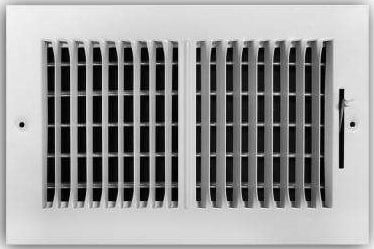 Easy-Install Air Filtration (Bender): U.S. Patent No. 8,870,995
Easy-Install Air Filtration (Bender): U.S. Patent No. 8,870,995
We all want cleaner air in our homes and workplaces. And most HVAC systems come with at least one main filter. Wouldn’t it be great if we could easily add additional filters, especially in the rooms – like the bedrooms and kitchen at home, and labs and food preparation areas at work – where we need extra clean air?
This patent solves that need! It creates a filter that easily attaches to an HVAC register with two hangers, and it filters and cleans the air as it enters the room. As the filter collects particles and fills, it is easily replaced. This invention will clean both cooled air in the summer and warmed air in the winter for buildings with forced-air heat.
The company that acquires U.S. Patent No. 8,870,995 for an “Air filter system for use with an HVAC register” will be able to produce easy-to-install filtration units in different filtration strengths and in multiple sizes to fit the most popular HVAC registers.
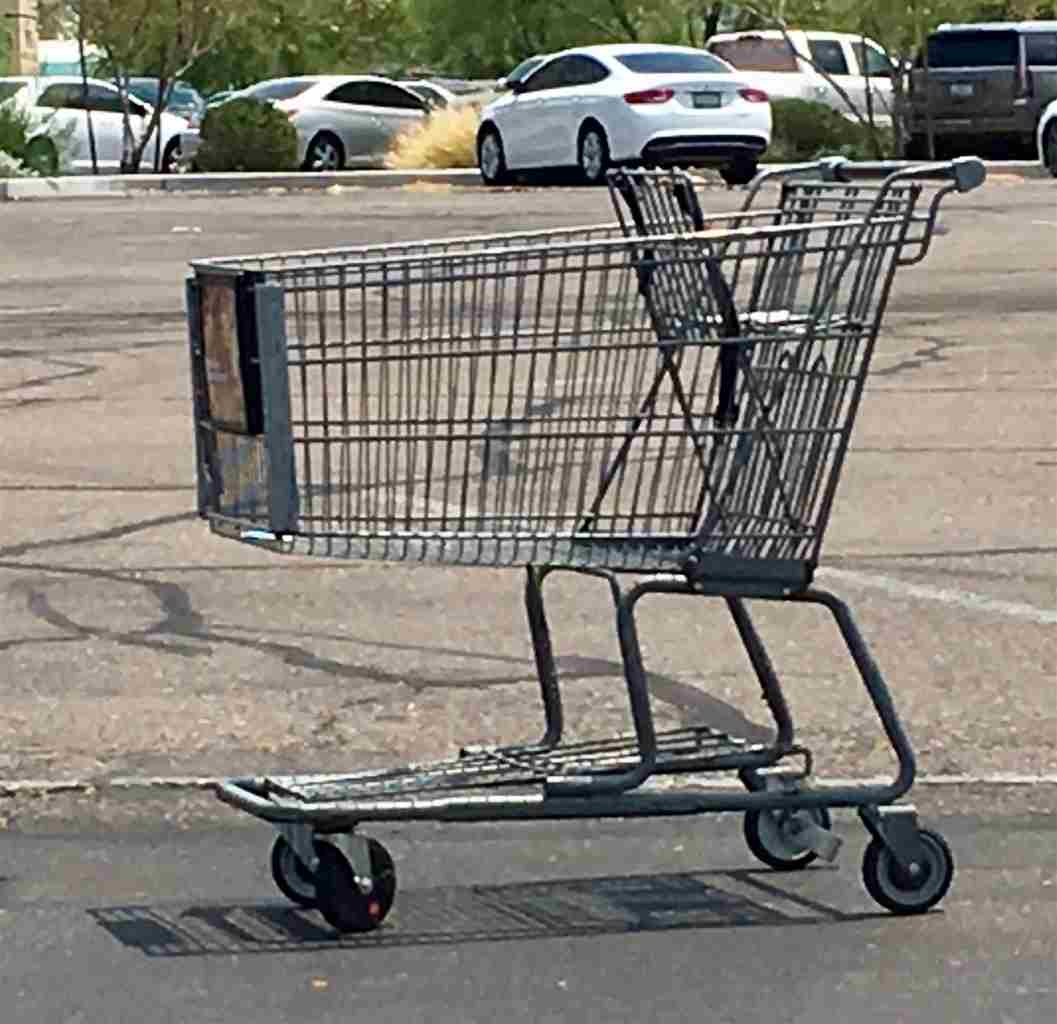 Auto-Return Shopping Cart (Caver): U.S. Patent No. 9,104,205
Auto-Return Shopping Cart (Caver): U.S. Patent No. 9,104,205
We have smartphones, smart watches, smart appliances and smart cars. Even smart blinds. Yes, even smart wheel barrels. Why not smart shopping carts? Not the shopping cart you use to check out at an e-commerce website, the shopping carts that are used to take your purchases – most usually groceries – from the store to your car and are left in the parking lot for a store employee to collect. Manually collecting shopping carts can easily cost a single retail store $100,000 or more a year! Wouldn’t it save money, time and general aggravation if the carts just found their way back home? Like your dog does.
That is exactly what this patent does! It creates the next generation of shopping cart that includes a battery-powered motor that senses when the cart is not in use and automatically returns it to a cart corral or other designated location. The invention covered by this patent creates a shopping cart with a programmable logic controller, rechargeable battery, powertrain components and brakes, GPS capabilities, object and activity sensors, docking ports, touchscreen, and Wi-Fi connectivity. Once the cart has been used and has been abandoned for a user-defined period, it automatically drives itself to a specific location using GPS guidance to determine the best route. While in route, object sensors detect anything – automobiles, shoppers, other shopping carts, baby strollers, etc. – in the path of the cart, enabling it to avoid such objects and return itself safely to where the store management wants the cart to be.
U.S. Patent No. 9,104,205 for an "Automated return shopping cart" would be a critical acquisition for any retailer looking to reduce its labor costs and create a smarter, safer parking lot and shopping experience for its customers, as well as any shopping cart manufacturer prepared to offer the next generation of carts to its customers.
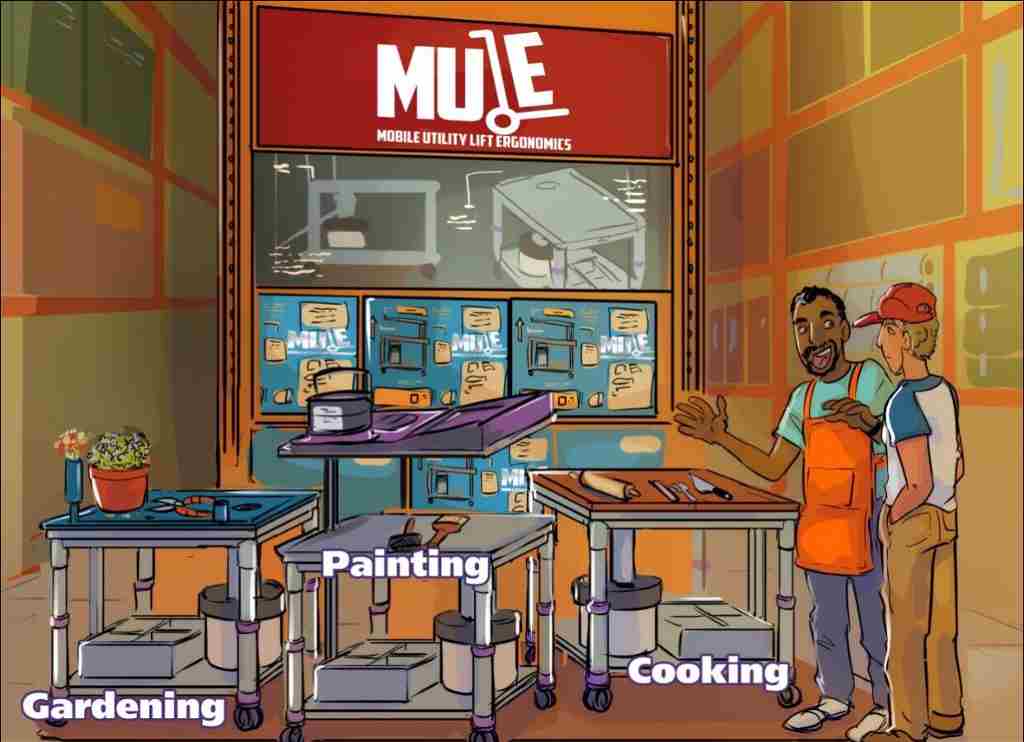 Ergonomic Height-Adjustable Cart (Carzola): U.S. Patents and Design Patent and Trademark Applications
Ergonomic Height-Adjustable Cart (Carzola): U.S. Patents and Design Patent and Trademark Applications
There are few things more uncomfortable – and more back-breaking – than working off a surface that is the wrong height – either too low or too high! Repair technicians, factory workers, painters and carpenters, plumbers and electricians, food service workers, medical personnel, retail staff, auto mechanics and dozens of other types of workers would all benefit from having their tools, parts, supplies and inventory nearby and at the right height for optimal job performance and reduced stress on their bodies – especially their backs. The invention covered by this portfolio addresses exactly that need!
Branded “Mobile Utility Lift Ergonomics™” or “MULE™” by its inventor, this portfolio creates a cart with a height-adjustable platform the user sets to exactly the right position for the most convenient access to his or her tools, parts, supplies, inventory or other materials. When a MULE is passed from one worker to the next, the new worker quickly adjusts the height of the platform to his or her optimal position. The MULE also includes a tube that leads to a trash receptacle – to keep the workplace clean – and it comes with a power station and electrical outlets for the user’s tools, equipment, PC or tablet, cell phone or other devices!
This portfolio consists of U.S. Patent No. 10,118,632 for a "Multipurpose Mobile Utility Lifting Ergonomic Cart" as well as a Design Patent Application, a Continuation-in-Part to the utility patent, and two Trademark Applications. This portfolio will give any commercial or industrial hardware or equipment manufacturer the opportunity to introduce a workplace cart that will create a new business segment. Different versions of the basic invention can be created for specific markets – construction, manufacturing, service and repair, food services, retail, medical and dental, and many other industries.
Mobile Utility Lift Ergonomics and MULE are trademarks of Alex Carzola.
 Improved Geodesic Dome Beam Connector (Albright): U.S. Patent No. 9,903,107
Improved Geodesic Dome Beam Connector (Albright): U.S. Patent No. 9,903,107
Geodesic domes are coming into more and more uses – from greenhouses and residential structures to commercial and solar-collection buildings to museums and sports stadiums. The famed architect and futurist Buckminster Fuller designed numerous structures based on the geodesic dome. A geodesic dome (often called just a “geodome”) is not just elegant in its appearance, it is also an inherently rugged – yet relatively lightweight – structure. This patent introduces hexagons and pentagons that simplify the design even farther while maintaining structural integrity.
Geodesic domes are not easy to build. A key element in the construction of a geodesic dome is connecting all the beams to each other. This patent creates an enhanced beam connector specifically for geodesic domes that enables a geodesic dome to be built using just one connector size and shape and just one beam size and shape. The improved connector comprises three angularly spaced apart legs radiating from the center at a downward pitch, each leg for receiving a beam. The top surfaces of each leg forms a dihedral angle for supporting adjacent exterior hexagonal and pentagonal panels. The bottom surfaces of each leg forms a dihedral angle for supporting adjacent interior hexagonal and pentagonal panels. All angles are accounted for by the connector so it is not necessary to continually adjust the beams or have to pull them all together during construction.
U.S. Patent No. 9,903,107 for a "Beam Connector" creates an advanced, easy-to-use and economical connector for the construction of geodesic domes that simplifies construction, reduces material and labor costs, and shortens the time it takes to construct a geodome of any size or material. This patent would be a critical acquisition for any manufacturer of structural hardware and/or geodesic domes.
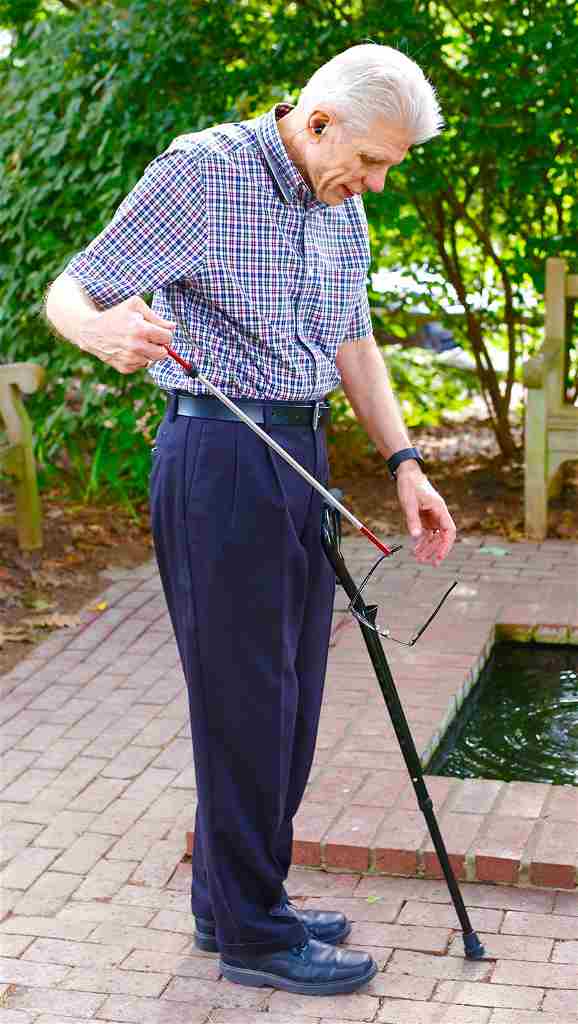 Cane with Retrieval Device (HHC): Two U.S. Patents
Cane with Retrieval Device (HHC): Two U.S. Patents
As the U.S. population ages, demand grows for products for senior citizens. An ongoing challenge for the elderly is picking up something – glasses, money, keys, pet toys, medications or other items – they dropped. The only currently available solution is a cane that turns into a grabber, but the problem with that configuration is the user loses the use of the cane when it converts to a retrieval device! This patent covers a dual-purpose apparatus – a cane that aids in walking and includes an attached reaching apparatus that the owner can use to retrieve a dropped item. Since the retrieval device is attached to the cane, it is always nearby and available when needed. The retrieval device is housed in a sheath, so once an item is retrieved, the reaching device (or grabber) can be easily replaced back into the sheath that is attached to the cane. The user does NOT use loose of the cane while using the retrieval attachment, dramatically reducing the number of senior falls that result in over one million hospital admissions a year and over 75,000 deaths!
U.S. Patent No. 9,456,670 for "Devices, systems, and methods for combining mobility and reaching aids" will enable the company that acquires it to create a new product segment for the 6+ million Americans who use a cane. Working samples of the product are available, and a manufacturing source is already in place, so the acquirer of this patent can go to market immediately! The portfolio also includes U.S. Patent No. 10,058,150 for "Devices, systems, and methods for combining mobility and reaching aids" that creates a second product line, a retrieval device that attaches to an existing cane.
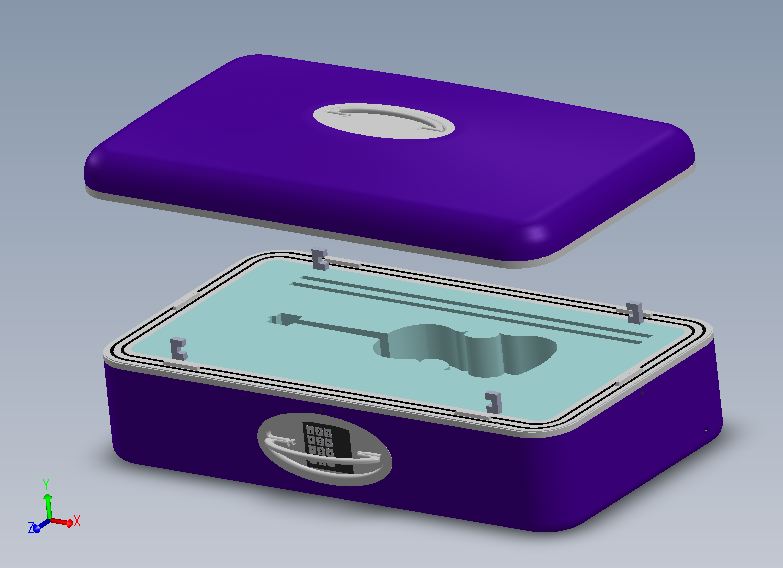 Secure Packing, Tracking, Monitoring, and Protecting of Valuable Articles (Hoeth): U.S. Patent No. 8,912,901
Secure Packing, Tracking, Monitoring, and Protecting of Valuable Articles (Hoeth): U.S. Patent No. 8,912,901
The invention covered by this patent is for securely encasing, tracking, monitoring and protecting articles of value for storage or transport. The enclosure described in the patent is equipped and programmed to acquire information such as location and travel history; internal and external conditions such as temperature and humidity; events such as openings, closings, locking and unlocking, and acceleration and impact; and image capture for a video or photo record of the surrounding environment. The enclosures are made of carbon fiber in an outer shell, high-strength and low-weight structural cores such as honeycomb internal structural layers, different types of foam materials for energy absorption, interior compartments for housing and protecting the contents, internal locks which can be remotely controlled electronically, and concealed case controls or an external control panel.
Any company, agency or organization that has the challenge of transporting valuable cargo – musical instruments, art and artifacts, wine and cigars, delicate electronic components or prototypes, for example – can benefit from the technology covered by U.S. Patent No. 8,912,901 for “Portable security and protection enclosures.”
Patent Brokerage Prospectus: Contact [email protected] to receive an analysis of each portfolio that includes:
- Executive Summary
- Patent Overview and History
- Technology and Investment Summary
- Market Research
- Company Analysis
- Illustrative Evidence of Use (if applicable)
We offer patents in these technologies:
- Agricultural
- Artificial Intelligence
- Automotive/Vehicular
- Aviation
- Banking/Financial Services
- Beverages/Foods/Nutritional Products
- Boat and Marine
- Cannabis and Medical Marijuana
- Construction/Building Trades
- Consumer Electronics
- Consumer Products
- Digital Currency/Cryptocurrency
- Drones/UAVs
- E-Cigarette & Vaping Technology
- E-Commerce
- Education & Training
- Energy/Power Generation
- Health and Beauty Products (HBP)
- IoT Patents/Internet of Things
- Manufacturing
- Medical Electronics and Devices
- Mining/Drilling
- Mobile/Wireless
- Network/Location-Based Services
- Optics/Displays/Video/LED
- OTT Patents/Over-the-Top
- Packaging
- PCs and Notebooks
- Pharmaceuticals
- Robotics/Automation
- Semiconductor
- Shoe & Apparel
- Smart Home/Smart Office
- Social Media
- Software, Apps, and Architecture
- Sports/Sporting Goods
- Telecommunications/IP Telephony
- Warehousing/Material Handling
- Other
- Go to Patent Index
- Return to Patent MarketPlace




